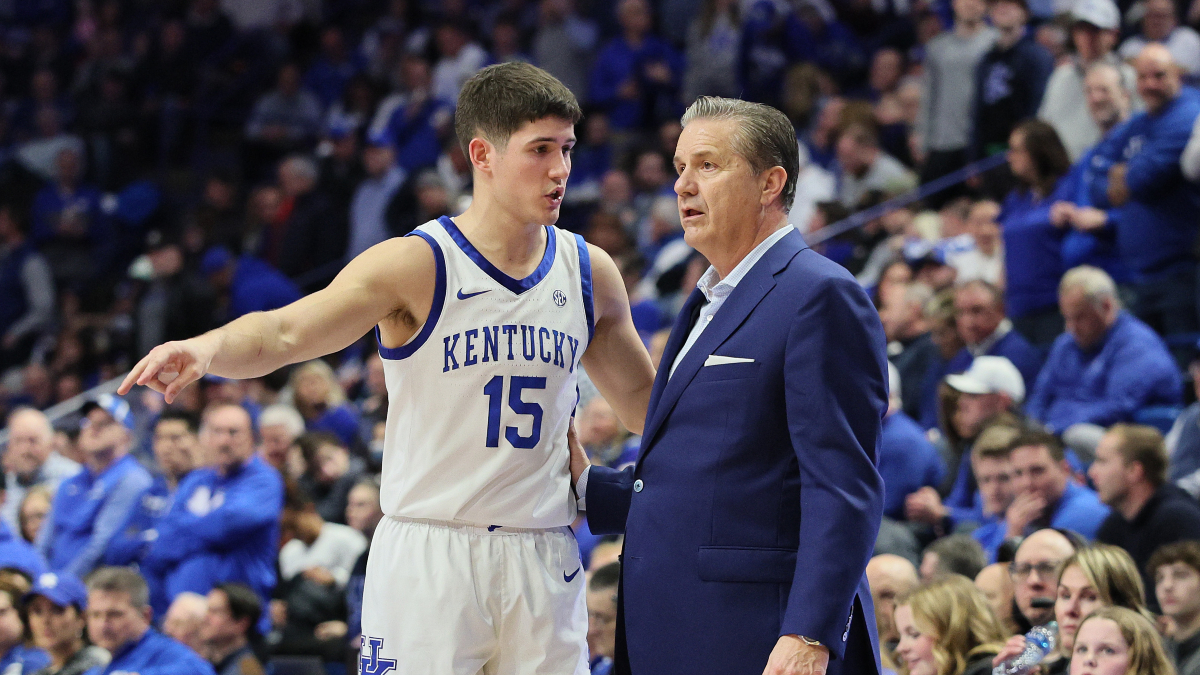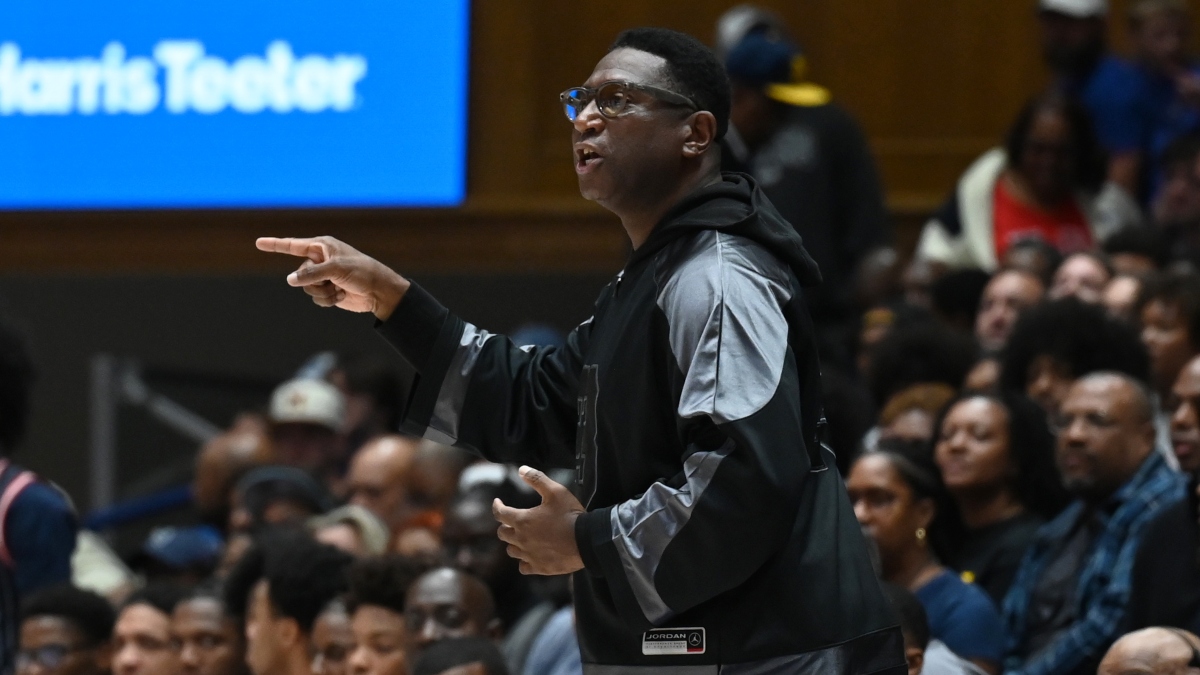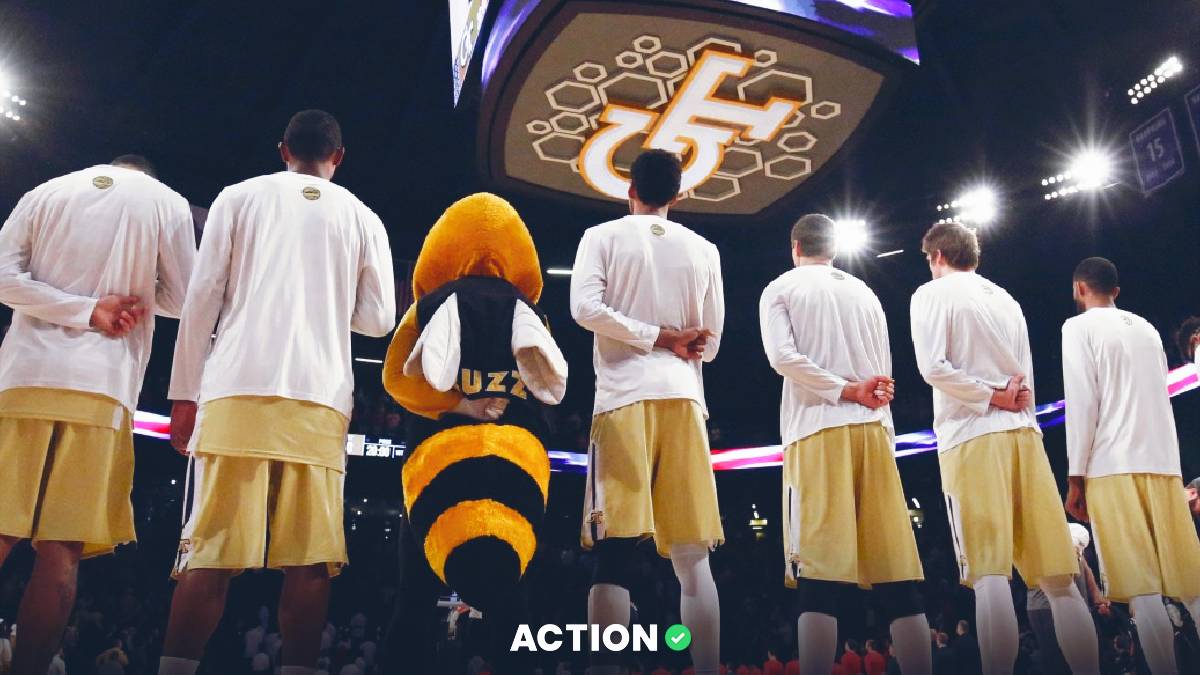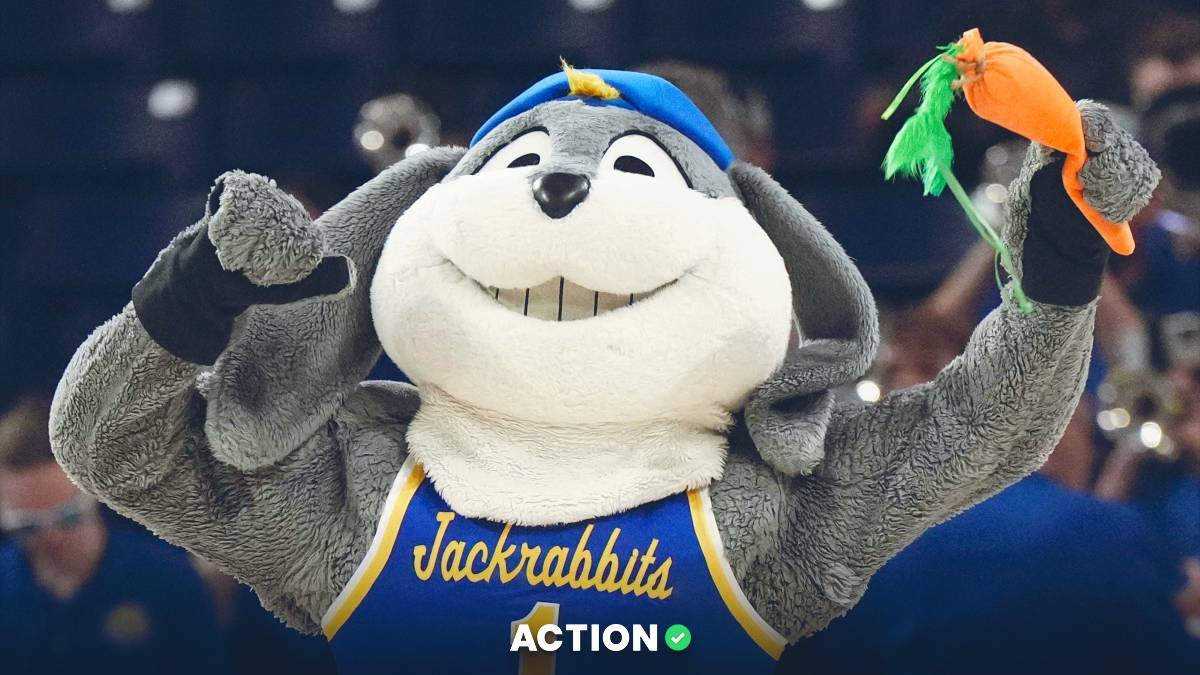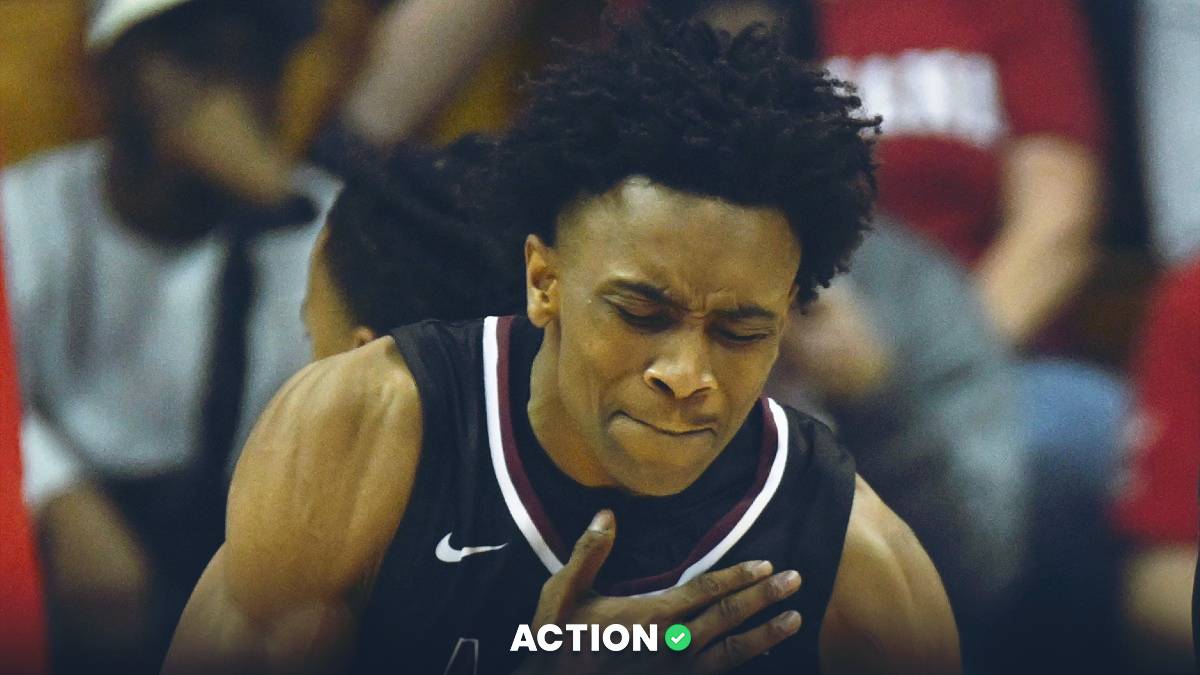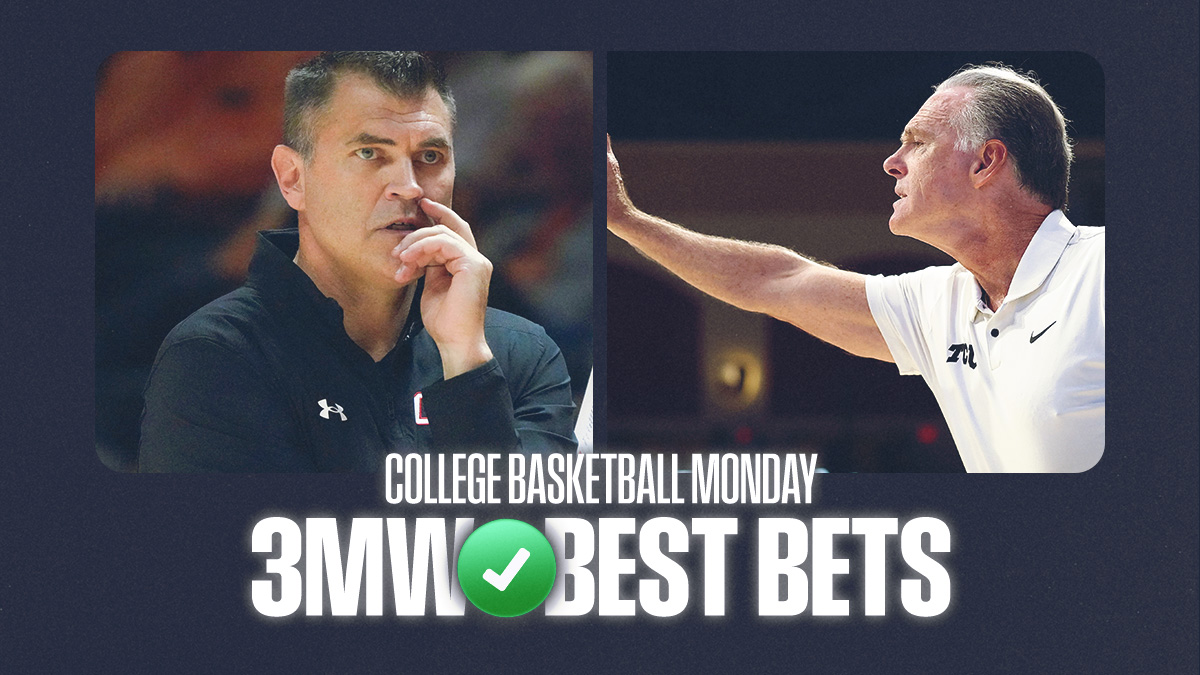As I do prior to every NCAA tournament, I wanted to share five fairly basic factors that I use as a starting point to identify key mismatches and potential upsets in either the first round or further down the line in the bracket.
Those include:
- Unique Schemes
- Turnover Rates
- Free Throw Percentages (and Frequencies)
- 3-point Shooting Splits (with a look at Regression Candidates)
- Rebounding Splits (with a touch of Transition data)
My power rating is my starting point and most important factor, but understanding each team's statistical profile and how they match up with their opponent is what I spend the most time on leading up to the tournament.
With a lack of familiarity outside of conference play, that means matchups and coaching are more emphasized, especially in a much more efficient market following five-plus months of results.
Let's take a look at which teams are likely to zone and/or press the most to get things started.
In The Zone
After 37 of the 38 most zone-heavy teams in the country missed the field last season, there are more in this year with nine of the top 38 (23.7%) making the tournament.
For the season, 75 teams played zone on more than 12% of their defensive possessions, per Synergy.
Here are their season-long Zone Frequencies and respective Zone Defensive Rating percentile ranking:
| Team | Zone Frequency | Zone Defensive Rating (percentile) |
|---|---|---|
| Oakland | 86.20% | 72nd percentile |
| Samford | 29.80% | 90th percentile |
| Washington State | 28.50% | 65th percentile |
| UAB | 27.60% | 52nd percentile |
| Long Beach State | 23.80% | 45th percentile |
| Wagner | 22.50% | 91st percentile |
| Stetson | 22.00% | 67th percentile |
| Howard | 21.30% | 52nd percentile |
| Baylor | 17.20% | 64th percentile |
| Saint Peter's | 15.70% | 85th percentile |
| Texas A&M | 13.30% | 60th percentile |
| McNeese State | 12.20% | 92nd percentile |
The two most zone-heavy defenses in the field, Samford and Oakland, draw two offenses in Kansas and Kentucky that are both elite against zone — although neither at high volume. While Kansas is pretty 3-point averse and not great from the outside, Kentucky led the country in 3-point Accuracy at 41.2%.
The Wildcats generate unguarded jumpers at a top-50 clip and hit them at a top-20 rate, which could spell doom for the Golden Grizzlies, who allow unguarded catch-and-shoot jumpers at the 10th-highest rate in the country, per Synergy.
Tennessee (vs. St. Peters) also grades out excellent in zone offense, as does UConn (vs. Stetson), but the Huskies were much more deadly against man, and I'd imagine the only prayer for the Hatters is to mix in plenty of different zone looks.
Gonzaga is another team that grades out very well against zone, but it mainly saw it from horrendous teams (MVSU, Pacific, San Diego), so it's hard to really trust those efficiency metrics. However, McNeese State has pretty much gone exclusively man of late, so it may be a moot point, but it's something the Cowboys do have in their bag.
Baylor has increased its Zone Frequency to 44% over the past seven games, which could pay dividends against Colgate. While the Raiders don't see zone often in the Patriot League, in their only game they saw zone for more than 10 possessions, they struggled mightily against Bucknell in the Patriot League semifinals while scoring only 0.69 points per possession.
The Howard-Wagner First Four game pits two teams that will use zone frequently with both offenses having plenty of familiarity with zones in their respective leagues — although neither graded out particularly well in that facet.
Believe it or not, despite its 3-point shooting prowess, Nebraska actually grades out as the worst zone offense (351st in points per possession) in the entire field. In fairness, the Huskers didn't see zone often, but they really struggled on the offensive end in zone possessions against the only two zone-heavy defenses on their schedule in Oregon State and Iowa. As a result, Buzz Williams could ramp up his zone defense percentage against Fred Hoiberg's squad.
Arizona (vs. LBSU) and San Diego State (vs. UAB) also struggled against zone defenses this season, finishing in the 39th and 35th percentiles with a relatively high volume. The Wildcats went 2-5 in league play when they saw zone in 20 or more possessions, while the Aztecs primarily faced pretty poor zone defenses. Meanwhile, Drake (vs. Washington State) was just average against zone while nationally elite against man.
Therefore, we could see all three of their opponents increase their zone frequency in the first round.
You also never know when a team will throw out a surprise zone based on tourney preparation.
Per Synergy, these five tournament teams had the highest points per zone possession among the 325 teams in the country that saw zone on a minimum of 75 possessions:
- Baylor (1st)
- Kansas (2nd)
- Nevada (4th)
- Kentucky (5th)
- St. Mary's (6th)
These are the worst:
- Nebraska (315th)
- Oakland (298th)
- Texas A&M (295th)
- Samford (243rd)
- Wagner (247th)
Kansas played virtually no zone defense all season (10 possessions), but could Bill Self break it out at some point against Samford in altitude with a depth disadvantage and injury questions?
Lastly, Oregon is known to mix up its defenses as much as any team in the country under Dana Altman, who will even switch between man and zone in the same possession, so don't be surprised to see him throw some unique looks at South Carolina. While the Gamecocks had success against zone during the regular season, they only really saw it against the likes of Elon and Missouri, which weren't defensive stalwarts to say the least.
Press U
In this year's field, 10 teams pressed at a top-60 clip, led by Samford, which did so at the nation's second-highest rate, trailing only Cornell.
Here are those clubs and their respective Press Defensive Rating rankings:
| Team | Press Frequency | Press Defensive Rating (percentile ranking) |
|---|---|---|
| Samford | 39.20% | 72nd percentile |
| Wagner | 32.90% | 90th percentile |
| McNeese State | 27.90% | 65th percentile |
| NC State | 26.10% | 52nd percentile |
| Saint Peter's | 25.30% | 45th percentile |
| San Diego State | 20.20% | 91st percentile |
| Howard | 19.00% | 67th percentile |
| Dayton | 15.10% | 52nd percentile |
| Oregon | 14.70% | 64th percentile |
| Duquesne | 14.30% | 67th percentile |
The press can obviously cause issues for teams that don't have multiple reliable ball-handlers, especially late in games. Here are the 10 best teams in the tourney field in terms of PPP (points per possession) among the 360 teams that faced the press on a minimum of 100 possessions:
- Tennessee (3rd)
- Samford (7th)
- South Dakota State (8th)
- Arizona (12th)
- Baylor (15th)
- Dayton (19th)
- Clemson (22nd)
- Nevada (24th)
- Texas Tech (25th)
- James Madison (26th)
And the 10 worst who could be particularly prone to blowing late leads:
- Saint Peter's (346th)
- TCU (334th)
- Wagner (303rd)
- Nebraska (298th)
- Grambling (287th)
- Alabama (268th)
- Mississippi State (260th)
- Kansas (254th)
- Drake (253rd)
- Montana State (245th)
In the only matchup of two of the 10 most press-heavy clubs in the field, Howard has major turnover problems (354th nationally), which Wagner could exploit, but can the seven-man Seahawks stay out of foul trouble? Meanwhile, Wagner's press offense has struggled immensely. The raw numbers would suggest Samford's press could give Kansas some issues, and it must be effective because the Jayhawks are elite in transition.
McNeese State's press could give the Zags (who saw very little during the season) some fits by forcing the ball out of Ryan Nembhard's hands. Texas Tech has an elite press offense, which isn't great news for a potentially fatigued NC State defense. Tennessee also has shredded presses this season, which should concern the pressure-heavy Peacocks.
In a battle of two pressure-heavy defenses, San Diego State is better equipped to handle the rock than UAB.
I'm not sure how much Dayton, which will press at a high rate in some games but hardly at all in others, will try to do so against Nevada, which is elite in that department. While Keenan Blackshear can be a bit careless with the ball at times, Hunter McIntosh (who should return from an illness) and Jarod Lucas hardly ever cough it up. I have that same sentiment in regards to Oregon against South Carolina.
Lastly, I'm not sure how much Duquesne will try to press BYU. The Dukes have decreased their press rate significantly of late, but the Cougars were a mixed bag when it came to facing the press. They had two absolute stinkers in that department against NC State and in the first meeting with UCF, but they absolutely carved up the Knights' press in their two most recent meetings.
Use our NCAA Tournament Bracket Predictor Tool to crush your bracket pool!
Sloppy Joes
On a related note, understanding who can and can't take care of the ball in a tournament setting is vital. That's especially true in the second game of the weekend after only one day of prep for a quick turnaround.
I personally also try to avoid overmatched underdogs that turn the ball over too much — since that can lead to easy buckets and extended runs the other way.
Here are the best and worst tournament Team Turnover Rates on both offense and defense. Please note that some of these could be by design based on scheme.
- Northwestern, Vermont, NC State and Virginia don't turn the ball over, but that's not as beneficial against their first-round opponents who don't pressure the ball much.
- Conversely, Longwood forces turnovers at a top-50 rate, which won't play well against Houston's elite ball-handling ability.
- Mississippi State's turnover woes could prove costly against a Michigan State defense that forces turnovers at a top-75 rate.
- Western Kentucky's turnover issues could spell trouble against Marquette in the only matchup of a top-five defense vs. bottom-five offense among tourney teams.
- The incessant pressure from Houston and Iowa State could really bother Longwood and South Dakota State, which don't have shining reputations for turnovers.
- Morehead State caught a huge break by drawing Illinois. The Eagles have turnover issues, but they will face an Illini defense that forces them at the third-lowest rate in the country.
That's huge for Morehead State.
Charity Work
Life's only certainties are death, taxes and free throw misses leading to bad beats in the tournament. Get ready for them to come just like every season when fouls go up by over 20% in the final two minutes of the dance.
It's valuable to at least know which favorites can and can't shoot free throws. This could also make a difference in your bracket. One cold shooting night from the charity stripe could send a team packing.
The chart below shows the 10 best and worst free throw shooting teams in the field:
- 10 teams have a Free Throw Frequency of at least 39%: Nevada, Grand Canyon, Purdue, Howard, McNeese State, UAB, Baylor, Utah State, Grambling, Longwood.
- Eight teams are below 28% in Free Throw Frequency: Creighton, Virginia, BYU, Marquette, Wagner, Charleston, Yale, Colgate.
- Nine teams have a Defensive Foul Rate lower than 26%: Creighton, Dayton, Purdue, Colgate, Virginia, Arizona, Gonzaga, Stetson, Vermont.
- Eight teams are above 36%: Auburn, Alabama, Northwestern, Howard, Houston, Samford, Montana State, Longwood.
- Nevada, which ranks third nationally in Free Throw Frequency, will face a Dayton defense that also ranks third in that same category.
- The same is true for McNeese State and Baylor, which get to the line at top-25 clips but will face defenses that boast two of the 25 lowest Foul Rates in the country. That said, if the Baylor game is called tight, the Bears have an enormous edge at the stripe (6% better than the Raiders). Drake has a similar advantage over Washington State.
- Grand Canyon, which gets to the line at a top-five rate in the country, should see its fair share of trips to the charity stripe against Saint Mary's. If it comes down to a free-throw shooting contest, the Antelopes have a major advantage at nearly eight percentage points better than the Gaels. The same holds true for UAB, although the shooting disparity isn't as wide with San Diego State.
- Two of the best free throw shooting teams in the field — Colorado and Texas Tech — should get plenty of opportunities to capitalize from the stripe in their respective matchups.
- Grambling could get to the line a ton against Montana State.
- Houston-Longwood could be a free throw fest with plenty of misses.
From the Parking Lot
We spend all week breaking down these matchups, but a large majority of the betting (and many outright) outcomes will simply boil down to 3-point variance, especially as the market continues to get more efficient with each passing year.
You should at least have some familiarity with which teams can shoot and which ones can't when evaluating specific matchups.
This is also an important factor when evaluating potential upsets for your bracket. Teams that attempt (and make) a high percentage of 3-pointers will certainly introduce more variance into their results, which is a positive factor for a potential upset.
The same can be said for lower seeds that play at a slower tempo, which leads to fewer possessions and increased variance. The teams that jump out in that perspective are Morehead State, Vermont, McNeese State and Yale.
Getting back to the perimeter, the chart below shows the seven best and worst 3-point shooting offenses and defenses in the field. Interestingly enough, the top-seven 3-point shooting teams nationally all made the field, while the seven worst listed are the only teams in the field that shot 33% or worse this season.
From a frequency standpoint, the five tournament teams that shoot the highest rate of 3-pointers per field goal attempt include:
- BYU (50.7%)
- Creighton (48.9%)
- Charleston (47.1%)
- Alabama (46.8%)
- Morehead State (45.1%)
Expect plenty of chucks from deep in Charleston-Alabama, making that a matchup full of 3-point variance. After breaking that one down further, I think it's best to bet that game live. When Charleston goes cold for stretches, Alabama will eat the Cougars alive in transition and at the rim, which could lead to massive in-game swings.
Creighton also ranks in the top five among tourney teams in limiting opponent 3-point attempts, along with Saint Mary's, South Carolina, Illinois and Morehead State, with the latter two facing off in a battle of two predominantly drop defenses.
Conversely, McNeese State, South Dakota State, Iowa State, Texas A&M and Long Beach State allow the highest 3-point attempt rates as either very compact or aggressive defenses.
The least 3-point reliant teams include:
- Long Beach State (28.3%)
- Longwood (28.3%)
- Kansas (29.7%)
- New Mexico (29.8%)
- Grambling (29.8%)
This is just a very basic starting point for any analysis, as there can be drastic scheme differences that lead to a significantly higher or lower percentage of 3-pointers taken or allowed by design.
Lastly, I would be remiss if I didn't highlight some potential regression candidates. Over small sample sizes, simply extreme 3-point shooting variance can really inflate a team's metrics or vice versa. Although, please keep in mind many factors could be at play here such as quality of opponents, injuries, scheme changes or overdue previous regression, but this is at least a good place to start if you want to dig further into a team.
Since February 1, here are the hottest teams from 3 with the biggest discrepancies from their pre-February 1 shooting splits, which are our potential negative shooting regression candidates:
| Team | 3-point Accuracy Improvement | Post Feb 1% vs. Pre Feb 1% |
|---|---|---|
| Saint Mary's | +11.1% | 43.2% from 32.3% |
| Grambling | +10.7% | 40.2% from 29.5% |
| Longwood | +7.9% | 38.9% from 31.0% |
| Nevada | +7.8% | 41.2% from 33.4% |
| James Madison | +7.2% | 41.1% from 33.9% |
| Charleston | +7.0% | 39.2% from 32.2% |
| Marquette | +6.8% | 40.2% from 33.4% |
| Gonzaga | +6.4% | 39.7% from 33.5% |
| Auburn | +6.3% | 39.3% from 33.0% |
| Drake | +5.3% | 39.9% from 34.6% |
| Howard | +4.2% | 40.2% from 36.0% |
| Montana State | +4.1% | 38.7% from 34.6 |
| NC State | +3.9% | 37.0% from 33.1% |
And the biggest droppers from beyond the arc since Feb. 1:
| Team | 3-point Accuracy Decrease | Post Feb 1% vs. Pre Feb 1% |
|---|---|---|
| Kansas | -11.1% | 25.9% from 37.0% |
| Oregon | -9.9% | 27.7%% from 37.6% |
| Colorado State | -6.1% | 29.5% from 35.6% |
| Alabama | -6.0% | 32.8% from 38.8% |
| Akron | -5.6% | 28.8% from 34.4% |
| BYU | -4.3% | 32.1% from 36.4% |
| FAU | -3.3% | 33.5% from 36.8% |
| South Carolina | -3.1% | 31.4% from 34.5% |
| Wisconsin | -2.9% | 33.2% from 36.1% |
From a defensive perspective, here are the best perimeter defenses that have seen the biggest decreases in opponent 3P shooting percentage since Feb. 1, which means they could potentially running a bit lucky:
| Team | Opponent 3-point Accuracy Decrease | Post Feb 1% vs. Pre Feb 1% |
|---|---|---|
| Grambling | -10.6% | 28.0% from 38.6% |
| Samford | -7.4% | 29.3% from 36.7% |
| Texas Tech | -5.7% | 28.5% from 34.2% |
| Akron | -5.2% | 27.0% from 32.2% |
| Vermont | -4.9% | 28.6% from 33.5% |
| Iowa State | -4.7% | 28.8% from 33.5% |
| Virginia | -4.6% | 27.5% from 32.1% |
| Colorado | -4.5% | 29.1% from 33.6% |
| Duquesne | -4.0% | 29.6% from 33.6% |
| Nebraska | -3.5% | 29.7% from 33.2% |
On the other end of the spectrum, here are the worst perimeter defenses that have seen the biggest opponent upticks:
| Team | Opponent 3-point Accuracy Decrease | Post Feb 1% vs. Pre Feb 1% |
|---|---|---|
| Illinois | +7.4% | 38.9% from 31.5% |
| Creighton | +5.5% | 35.7% from 30.2% |
| Gonzaga | +4.5% | 36.9% from 32.4% |
| Michigan State | +4.2% | 35.6% from 31.4% |
| South Carolina | +3.8% | 36.0% from 32.2% |
| Long Beach State | +3.4% | 37.2% from 33.8% |
Here are some quick takeaways:
- Will Kansas finally start hitting shots again? Will Saint Mary's start missing?
- Alabama has been cold of late, while Charleston has been red hot, which could spell potential danger for the Cougars.
- Grambling has benefited from pretty extreme positive 3-point variance on both ends of late, while South Carolina has been doubly unlucky.
- Nebraska's defensive surge can at least be partially attributed to opponents not being able to hit shots from the outside, and the same can be said of Colorado.
- Colorado State is due to start hitting some shots from the perimeter, while Virginia has some looming negative regression on the defensive end in that area.
Eating Glass
If the shots aren't falling from the outside, offensive rebounds can really bail a team out in a sudden-death tournament.
Take a look at the 10 tournament teams that rank in the top 20 nationally in Offensive Rebounding Rate along with the 10 worst Defensive Rebounding teams in the field.
- Longwood and Houston will face each other as two of the better offensive rebounding teams in the country.
- Good luck to Stetson containing UConn on the offensive glass (and Grambling if it advances to face Purdue).
- Texas A&M led the nation with an Offensive Rebounding Rate of 42.0%. No team has finished above that level since 2016. The Aggies could grab many misses against a Nebraska defense that ranks 223rd in Defensive Rebounding Rate.
Keep in mind that some of these statistics can simply be a result of a specific scheme by design such as a zone defense naturally allowing more offensive rebound chances.
Also, some teams don't get any offensive rebounds due to a pure lack of size, but others (like Vermont) don't in order to get back on defense to prevent transition opportunities.
Conversely, others are vulnerable to opponent offensive rebounds because they want to get out in transition off misses (see Samford). The same holds true for ultra-aggressive defenses (see Auburn) that can get out of position going for steals or blocks.
If you're curious, the nine teams that get out in Transition at top-50 rates nationally include:
- Western Kentucky
- Long Beach State
- Samford
- TCU
- Kentucky
- McNeese State
- Florida
- Gonzaga
- Arizona
Four of those teams play each other in the first round in Gonzaga-McNeese State and Arizona-Long Beach State.
Meanwhile, the 12 tournament defenses that rank in the top 20 nationally in lowest Transition Rates allowed include:
- Virginia
- Colorado State
- Michigan State
- Wisconsin
- Colgate
- Florida Atlantic
- Drake
- Northwestern
- Saint Mary's
- Utah State
- Creighton
- Nebraska
Expect Virginia-Colorado State to be played entirely in the half court with a pair of defenses that allowed the lowest percentage of transition opportunities in the entire country. Utah State does an effective job of limiting transition opportunities, which is a major key against TCU.


